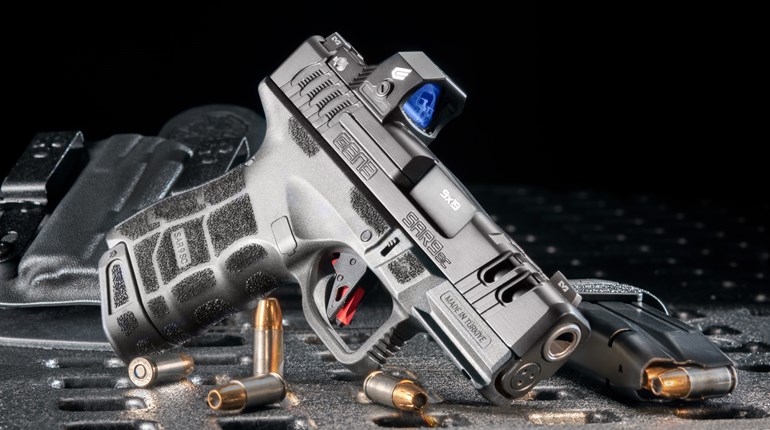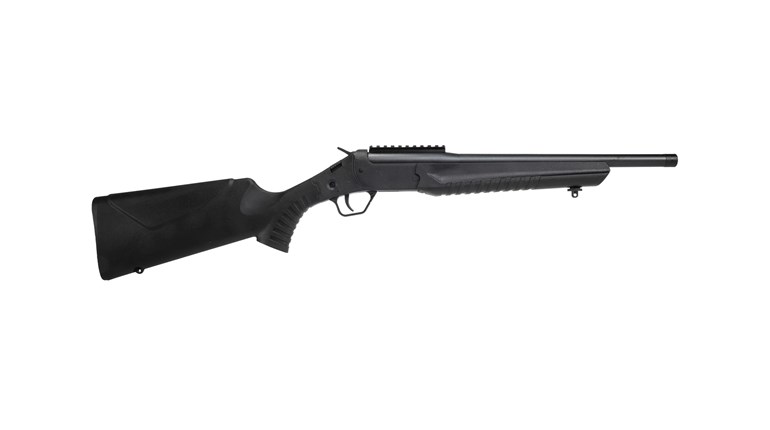
AR-15 pistols have always inhabited an odd space. When chambered in .223/5.56, they are loud, flashy and occasionally unreliable; however, change the chambering to .300 Blackout, and they become … different. Civilized. The Bravo Company RECCE-7, chambered in .300 Blackout, is a further-refined AR-15 pistol model.
The “7” refers to the barrel length, which shortens the usually already-compact AR pistol even more. The .300 Blackout was designed for short barrels, and trimming the AR-pistol barrel here from eight or nine inches down to seven does not take off much, if any, velocity.

The heart of the RECCE-7 is a Bravo Company receiver set—both the upper and lowers are made of 7075-T6 forgings—with the upper being a flat-top (almost standard these days). The upper has both a forward assist and an ejector block to deflect empties away from left-handed shooters. Inside the upper, Bravo installs its magnetic-particle-inspected, shot-peened and proof-tested bolt in a military-specification carrier. As the .300 Blackout uses a case with the same head diameter as the 5.56, the upper receiver internals choice is easy. The barrel is made of military-specification 11595E alloy steel, and the barrel extension and upper receiver have M4 feed ramps machined into them. The gas system is pistol-length and uses a direct-gas method of cycling.
The handguard of the RECCE-7 is the Bravo MCMR-5. This is a free-float design, using a proprietary barrel nut and cross-clamping bolts. It uses a steel “C” connector to resist handguard rotation and goes far enough forward to cover the low-profile gas block. The MCMR handguards are an M-LOK pattern design, and the RECCE-7 package includes an M-LOK-to-Picatinny adapter bar, so you can still attach accessories that require a Picatinny rail on the handguard. On the threaded muzzle, Bravo has installed its 7.62 flash hider, which also works as a compensator.
 The lower receives a military-specification, single-stage trigger parts assembly, with a standard selector/safety lever. The lower is marked SEMI/SAFE, and the bolt-stop lever and magazine-release button are all standard USGI-pattern parts. The lower has a BCMGunfighter Mod 3 pistol grip. The grip has a higher rear to fill the gap behind the receiver, and a changed angle from that of a military-specification pistol grip. The angle is reduced from the axis of the bore to both help you keep your elbow tucked down when firing and to reduce wrist stress while you’re positioned in low ready.
The lower receives a military-specification, single-stage trigger parts assembly, with a standard selector/safety lever. The lower is marked SEMI/SAFE, and the bolt-stop lever and magazine-release button are all standard USGI-pattern parts. The lower has a BCMGunfighter Mod 3 pistol grip. The grip has a higher rear to fill the gap behind the receiver, and a changed angle from that of a military-specification pistol grip. The angle is reduced from the axis of the bore to both help you keep your elbow tucked down when firing and to reduce wrist stress while you’re positioned in low ready.
The buffer tube on the RECCE-7 is a standard carbine receiver extension, with an SB Tactical SBA3 arm brace installed. The SBA3 arm brace can be adjusted in extension to accommodate various arm lengths. The buffer tube castle nut is properly torqued and staked (a sign of proper assembly of an AR-15) and Bravo has installed a carbine buffer inside. The RECCE-7 package also includes two other heavier buffers, so you can tune your RECCE-7 to your loads and your desired function and felt recoil.
The RECCE-7 does not come with sights, as we all have our own ideas about what is right and proper. In the RECCE-7 box are a Bravo 30-round magazine, cable lock, two extra buffers, an adapter rail to the M-LOK and a QD sling swivel M-LOK attachment for the handguard. (The SBA3 arm brace has quick-disconnect sockets built in.) There is also a pair of Allen wrenches (to install the M-LOK parts) and a reprint of a USGI operator’s manual.
Testing the RECCE-7 is a bit complicated because of the wide range of bullet weights offered for the ammunition. The lightest bullets, at 110 grains and supersonic velocities, have greatly different trajectories, and often greatly different points of impact, compared to the 200-grain and heavier subsonic loads. Keeping zeros and points of impact straight can be complicated, and many shooters simply pick one or the other, and stick with super- or subsonic loads. Typically, the supersonic loads require a heavier or the heaviest buffer weight, while the subsonic loads require the lightest of the three you can choose from.
Indeed, while testing, I set the RECCE-7 up for supersonic loads; when I did, the subsonic loads often failed to lock the bolt open when the last round was fired. This is typical and only indicates that for use with subsonics, a lighter buffer weight needs to be used. Accuracy was stellar, aided by a Leupold VX-Freedom 1-4X scope and shooting from the bench.
As a fun range gun and a serious defensive tool, the Bravo RECCE-7 would serve you well. It feeds from standard AR magazines, and while all ammunition is tough to source these days, the .300 Blackout is a dirt-common cartridge, not something rare or proprietary. It is offered in a wide variety of bullet designs, from FMJ plinking loads, to hunting and serious self-defense offerings. In today’s world of high-priced rifles, the RECCE-7 is value for money, made with top-quality parts.


































